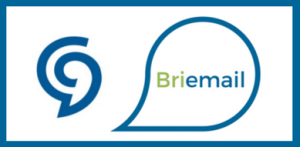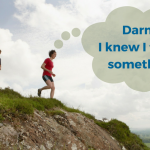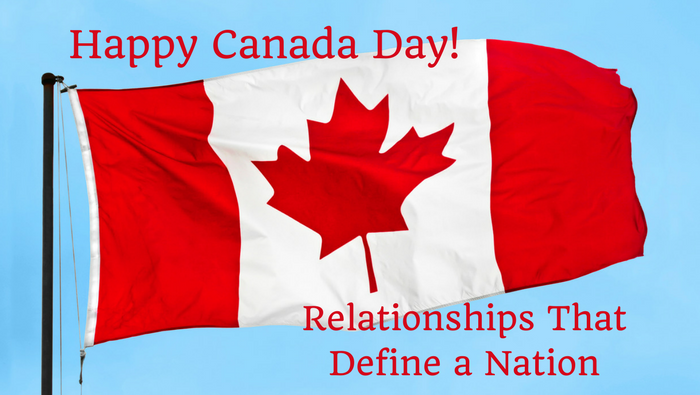
by Brie Barker | Uncategorized
My leadership blog is all about helping current and emerging leaders learn how to transform difficult conversations and dysfunctional workplace relationships into positive and productive ones.
Relationships Define National Identity — Happy Canada Day?
First of all … Happy Canada Day!
/
For my fellow Canadians, I hope you and your family and friends find a meaningful and enjoyable way to celebrate the day. For my American friends, I invite you to take a moment to reflect on the largely positive and productive relationship our two nations share.
/
Canada, like any country, can be viewed as one giant workplace. It’s the relationships amongst our citizens, groups and institutions that define who we are as a nation.
/
And these relationships, just like any shared between two people, are in a constant state of flux. They ebb and flow along the continuum between complete dysfunction and discord at one end and maximum synergy and harmony at the other. Throughout our country’s history, there have been and continue to be those who suffer and those who prosper due to these relationships.
/
If the overall state of our country is to continually move towards maximum synergy and harmony and reducing the gap between those who suffer and those who prosper, we need to do several things on a daily basis.
/
We need to:
/
-
Commit/re-commit to that goal
-
Embrace non-judgement
-
Engage our empathy and compassion
-
Listen more than talk
-
See things for what they are as told by the people who are experiencing them
-
Keep our minds, hearts and the dialogue open
-
Take action that honours ourselves and others
/
Though I’m sure the following list is incomplete, there are several national conversations and relationships that seem to be in need of engaging/re-engaging in this mindset:
/
-
The government and aboriginal peoples
-
White and non-white people
-
Environmentalists and industrialists
-
Straight and LGBT people
-
Legislative and judicial institutions
-
Immigrants and non-immigrants
-
Law enforcement and the black community
-
Muslims and non-Muslims
-
National security and democratic freedom groups
/
It is not enough to say, “Why can’t we all just get along?”
/
Relationships take work.
/
Are we up for it, Canada?
/
— Brie
/
a.k.a. A privileged, straight, white man.
Relationships Define National Identity — Happy Canada Day?
First of all … Happy Canada Day!
/
For my fellow Canadians, I hope you and your family and friends find a meaningful and enjoyable way to celebrate the day. For my American friends, I invite you to take a moment to reflect on the largely positive and productive relationship our two nations share.
/
Canada, like any country, can be viewed as one giant workplace. It’s the relationships amongst our citizens, groups and institutions that define who we are as a nation.
/
And these relationships, just like any shared between two people, are in a constant state of flux. They ebb and flow along the continuum between complete dysfunction and discord at one end and maximum synergy and harmony at the other. Throughout our country’s history, there have been and continue to be those who suffer and those who prosper due to these relationships.
/
If the overall state of our country is to continually move towards maximum synergy and harmony and reducing the gap between those who suffer and those who prosper, we need to do several things on a daily basis.
/
We need to:
/
-
Commit/re-commit to that goal
-
Embrace non-judgement
-
Engage our empathy and compassion
-
Listen more than talk
-
See things for what they are as told by the people who are experiencing them
-
Keep our minds, hearts and the dialogue open
-
Take action that honours ourselves and others
/
Though I’m sure the following list is incomplete, there are several national conversations and relationships that seem to be in need of engaging/re-engaging in this mindset:
/
-
The government and aboriginal peoples
-
White and non-white people
-
Environmentalists and industrialists
-
Straight and LGBT people
-
Legislative and judicial institutions
-
Immigrants and non-immigrants
-
Law enforcement and the black community
-
Muslims and non-Muslims
-
National security and democratic freedom groups
/
It is not enough to say, “Why can’t we all just get along?”
/
Relationships take work.
/
Are we up for it, Canada?
/
— Brie
/
a.k.a. A privileged, straight, white man.
© 2018 Connected Conversations™

by Brie Barker | Uncategorized
The quicker you’re able to identify and adapt to someone’s communication style, the better you’ll be able to get that relationship off to a good start right out of the gate. This is also particularly relevant if the relationship, by its nature, is a brief and important one.
For example, I give a lecture at the University of Ottawa to first-year medical school students on how to communicate effectively in difficult conversations with patients.
Being able to recognize a patient’s inherent communication style and adapt your communication style accordingly will help ensure you communicate with them fully and effectively.
Hospital physicians seldom have a lot of time to spend with each individual patient and it’s essential that each patient comes away from the encounter with a clear understanding of their medical condition and a complete buy-in with the doctor’s recommended treatment plan. If they don’t, then the chances of successful treatment diminish — and, when their medical situation is serious, many patients are in a heightened state of stress and communication becomes even more difficult.
In each of my next 4 blog posts, I’m going to talk about one of the four primary communication styles and tell you:
1. what the observable characteristics are of people who have that style,
2. how they tend to behave when under stress, and
3. how to adapt your own communication style so you can more easily connect and communicate with them.
Stay tuned!
Have an enjoyable and productive day.
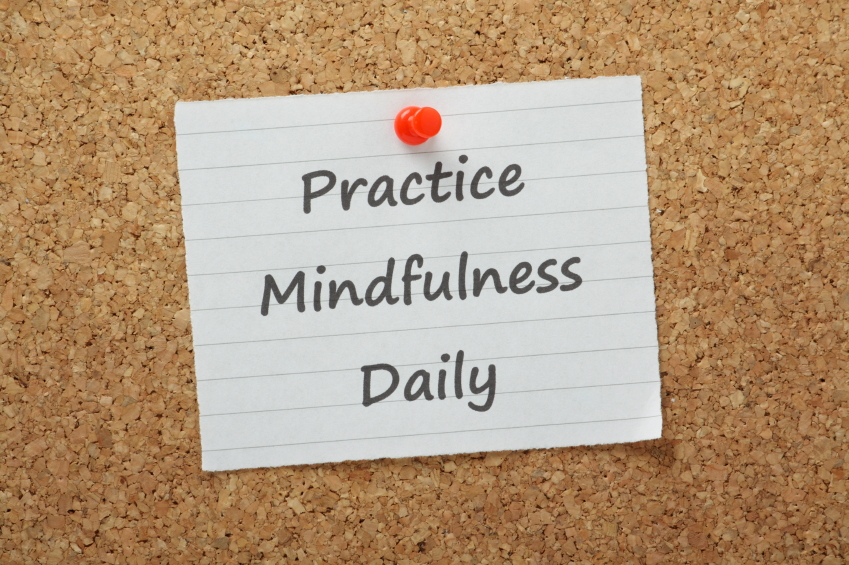
by Brie Barker | Uncategorized
Developing and practicing Mindfulness is something everyone can do and it’s a powerful skill in terms of creating and maintaining positive and productive workplace relationships.
Many years ago, I took an 8-week course called the Mindfulness Based Stress Reduction program (MBSR), which was developed by Jon Kabat-Zinn at the University of Massachusetts Medical Center. Kabat-Zinn describes mindfulness as “a lifetime engagement not to get somewhere else, but to be where and as we actually are in this very moment, whether the experience is pleasant, unpleasant, or neutral.”
Since that time, mindfulness has continued to be a core part of how I try to move through life and it’s certainly a concept that’s deeply integrated in the work that I do. Some of my recent social media posts have spoken to the importance of mindfulness in the workplace; if you missed them, here are two articles from Harvard Business Review you can read:
(A follow-up Facebook post will come out next Monday, so “Like” my Facebook page if you don’t want to miss it.)
Being mindful is another way of saying being fully present — and that’s what you need to be during every encounter you have with someone at work. Here are 5 steps to help you do that:
- Embrace the notion that the OTHER person is the most important one in the conversation, not you.
- Listen more, talk less.
- Temporarily let go of the past — listen without prejudging.
- Don’t get emotionally hijacked — when you let your emotions take charge, you’re no longer listening.
- Remain focused — don’t let distractions break your connection with the other person; ensure they get the message that they’re the most important thing to you at the moment.
The more you practice these things, the better you’ll get at them. The better you get at them, the better your workplace relationships will be.
Have an enjoyable and productive day!
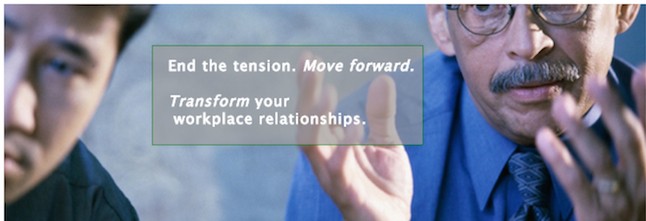
by Brie Barker | Uncategorized
Hello!
My name is Brie Barker. I’m the Founder and Chief Learning Facilitator of Connected Conversations and I want to welcome you to my blog.
If you already know me, then thanks for joining me on this new adventure. If we haven’t connected directly yet, then I hope you come to see me as a trusted voice on how to transform difficult workplace relationships.
This is my first blog post … ever! (exhaling). That being said, it’s been over 10 years in the making. Over that time, I’ve helped hundreds of people, from all across North America, experience the three major benefits of learning how to transform their difficult workplace relationships: (more…)

![]()





